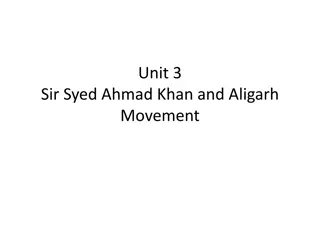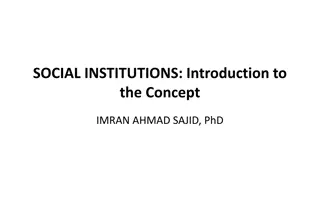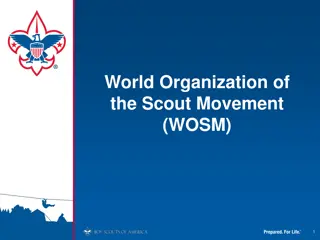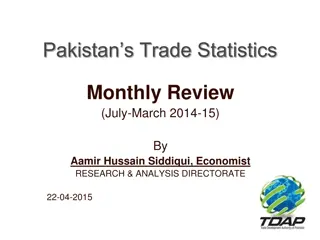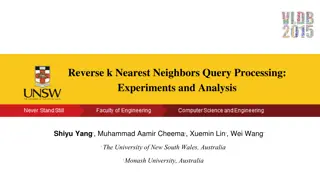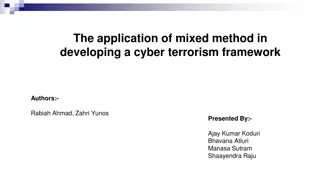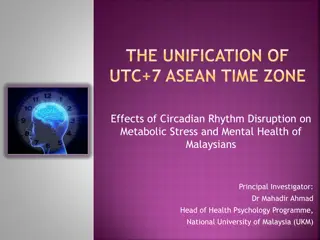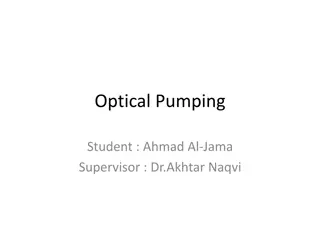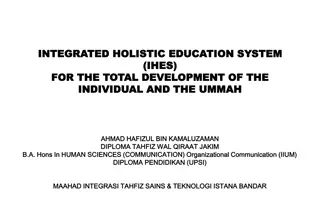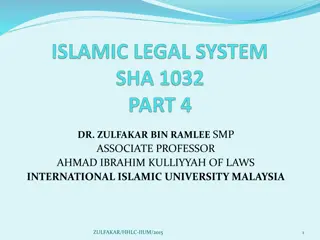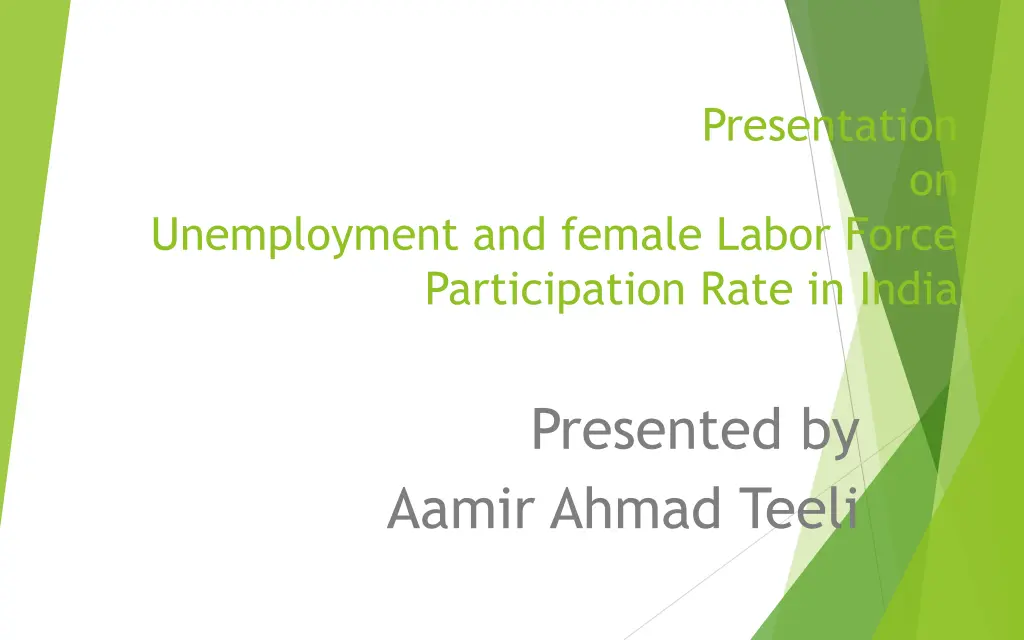
Unemployment and Female Labor Force Participation in India
Explore the challenges of unemployment and declining female labor force participation in India, impacting the country's economic and social landscape. Discover how these factors influence the overall workforce dynamics and potential for economic development in the region.
Download Presentation

Please find below an Image/Link to download the presentation.
The content on the website is provided AS IS for your information and personal use only. It may not be sold, licensed, or shared on other websites without obtaining consent from the author. If you encounter any issues during the download, it is possible that the publisher has removed the file from their server.
You are allowed to download the files provided on this website for personal or commercial use, subject to the condition that they are used lawfully. All files are the property of their respective owners.
The content on the website is provided AS IS for your information and personal use only. It may not be sold, licensed, or shared on other websites without obtaining consent from the author.
E N D
Presentation Transcript
Presentation on Unemployment and female Labor Force Participation Rate in India Presented by Aamir Ahmad Teeli
Introduction The economic status of a country is conditioned by various economic indicators prevailing in the economy which include labor market dynamics, capital formation, technological development, economic growth and so on. These economic indicators are the reason for the world being divided in developed, developing and 3rdworld countries. Every country tries its best to shape these indicators in such a way that the maximum possible growth and development can be achieved. Among these variables, labor market variables like unemployment, labor force participation rate are key variable which are closely related to poverty, inequality and economic growth and what not.
Continued Unemployment in a layman s language means a situation in which people are idle and looking for jab at prevailing wage rate but are unable to get one. Presence of unemployment is the failure on the part of government and society to provide jobs to the people who are seeking them. Right to employment is part of the Universal Declaration of Human Rights (Article 23 UN Declaration of Human Rights). Therefore, ensuring employment to all those willing to work is a government s responsibility. Similarly labor force participation rate refers to the percentage of the population in the age group of 15-64 who are either working or actively looking for work.
Continued The economic and social costs of unemployment and underemployment are staggering; Unemployment causes permanent losses in the potential output of goods and services. But what if there is a decrease in the proportion of people who are seeking jobs and a higher proportion of them are unable to get one. As is happening in case of India, it is a double whammy lower labor force participation rate and higher unemployment rate. Severely low and decreasing female labor force participation in India is one of the most important problems that Indian policy makers have been facing since long. In India the percentage of population seeking employment is falling and the percentage of them unable to get the job is increasing.
Continued The youth unemployment rate which was thrice (16.72%) during 1991 stands at about 5 times higher (23.1%) than the overall unemployment rate in 2019-20. India has the youngest population in the world with a median age of 24 years. By 2020, India s average age will be 29, whereas China s would be 37 and Japan s 48 (Das 2019). At present, India has the largest young population in the world, with over 65 percent of the population in the working age of 15-59 years. The share is expected to rise till 2035-40 giving India the longest window of opportunity compared to any other country to exploit its demographic dividend (Kapoor 2019).
Continued Recent works on unemployment suggest that it is a double-edged sword, which on one side leads to permanent loss of potential output and on the other side effects labor force participation rate via discouraging effect. So changes in prevailing labor market conditions affect the individual participation decisions; these influences are captured by the added worker effect and the discouraged worker effect. Discouraged worker effect works in the view of existence of unemployment in the economy, laborers probability of finding a job goes down which in turn discourages him to actively look for a job and participate in the labor market.
Continued As established unemployment can have a positive side as well via added worker effect, as unemployment family utility function of a family at the time of high unemployment in the economy. The earning losses of one member are expected to be offset by increase in the labor supply of other family members. Net change in labor force participation rate in view of increasing unemployment depends upon the strengths of discouraged worker effect and added worker effect.
Review of Literature sterholm (2010) using aggregated and gender-disaggregated data, adopts Johansen cointegration approach as empirical methodology to examine this linkage for Sweden. The author uses both aggregated and gender-specific data, and reaches the conclusion supporting discouraged-worker effect. Emerson (2011) finds discouraged-worker effect in the United States. Kakinaka and Miyamoto (2012) differ from the two studies by considering age-specific data as well as aggregated and gender-specific data. They conclude discouraged-worker effect for middle-aged and old male groups, and added-worker effect for young male. Benati (2001) finds support for the discouraged worker effect for the overall series as well for a number of age sex disaggregations in the US. Parker and Skoufias (2004) found evidence of a significant added worker effect for women in Mexico. This suggests that there is a causal link between unemployment and labor-force participation and the link is puzzling.
Statement of the Problem India being a low income developing country with huge population needs to grow fast for long periods to be a prosperous economy. Since the reforms began in early 1990 s Indian economy has seen a marked increase in the growth rate for almost two decades, but labor market indicators like unemployment rate as well as labor force participation rate remained a cause of serious concern. With India being facing high unemployment rate and low labor force participation rate, particularly FLFPR. Although many researches had been taken up these issues, but most of them analyzed either of them, none of the study attempted to analyze both of them simultaneously and their mutual association in India. In this regard this study attempts to examine the relationship between the two through the lens of discouraged worker effect and added worker effect.
Objectives To Through some light on labor market indicators of India. To analyze the puzzling relationship between India's unemployment rate (Youth & Overall) and Female Labor force participation rate.
Data and Methodology The study is carried while using secondary data. We use the annual time series data on variables, FLFPR, overall unemployment rate and youth unemployment rate for the period of 1991-2019. The data on study variables is taken from the World Bank database. The study was carried while using ARDL model proposed by Pesaran and Shin (1995) and Pesaran et al (1996).
Unit root Results We first examined the time series properties of the labor force participation and unemployment Augmented Dickey Fuller (ADF) unit root test of Dickey and Fuller (1979). TheADF test has non stationarity under the null hypothesis rates (overall & youth) using The results of ADF stated that all the variables are stationary at first difference and none of the variables is stationary at level with 5% level of significance. So null hypothesis was accepted at level but rejected at First difference.
Short Run Results While analyzing short run relationship in ARDL model we found strong discouraged worker effect for both overall unemployment rate as well as youth unemployment rate. The results concluded that there exists a negative and significant relationship between FLFPR and overall unemployment rate. Same was the case with FLFPR and youth unemployment rate. We found that 4.55% increase in overall unemployment rate leads to 1% decrease in FLFPR. Similarly 2.78% increase in youth unemployment decreases FLFPR by 1%. So the results supported strong discouraged worker effect in the short run.
Long Run Results Based on long run relationship results we conclude that there exists a negative and significant relationship between, FLFPR and overall unemployment rate in the long run with a coefficient of -18.3. Similarly we found negative and significant relationship among FLFPR and youth unemployment rate with a coefficient of -2.04. Based on the results we found that a higher unemployment rate is associated with a lower Female labor force participation rate. we found significant discouraged workers effect, due to which very large number for women remain out of labor force.
Long run results continued During the era of low unemployment, women chose to enter the labor force in large numbers and during the period of high unemployment they choose to stay out of labor force. found strong discouraged unemployment rate where 2% increase youth unemployment decreases female labor force participation rate by 1% in the long run. We workers effect due to youth Discouraged workers effect In case of overall unemployment rate although significant but not so strong where we found 18% increase in unemployment leads to 1% decrease in female labor force participation rate in the long run.
Results Continued For the purpose of testing the presence of serial correlation we employed Breusch-Godfrey serial correlation LM test. The model was found to be free from serial correlation with P-Value of 0.09 for obs. R-squared. Also we tested for the presence of heteroscedasticity. For the said purpose we used Breusch-Pagan-Godfrey test, we found our model free from heteroscedasticity with a P-value of 0.06 for obs. R-squared. Goodness of fit was also justifiable with R-Squared of around 96
References Benati, L., 2001. Some empirical evidence on the DiscouragedWorker effect. Econ. Lett. 70, 387 395 Emerson, J. 2011. Unemployment and Labor Force Participation in the United States. Economics Letters 111 (3): 203 206. doi:10.1016/j.econlet.2011.02.022. Kakinaka, M., and H. Miyamoto. 2012. Unemployment and Labour Force Participation in Japan. Applied Economics doi:10.1080/13504851.2011.613742 Letters 19 (11): 1039 1043. Kaur, R. (2013). Unemployment on rise in India. Retrieved from http:// www.mapso findia.com/my-India/society/unemployment-on-rise-in-India Layard, R., S. J. Nickell, and R. Jackman. 1991. Unemployment: Macroeconomic Performance and the Labour Market. Oxford: Oxford University Press P. 2010. Unemployment Sweden. Economics Letters 106 (3) sterholm, and Labour-Force Participation in




